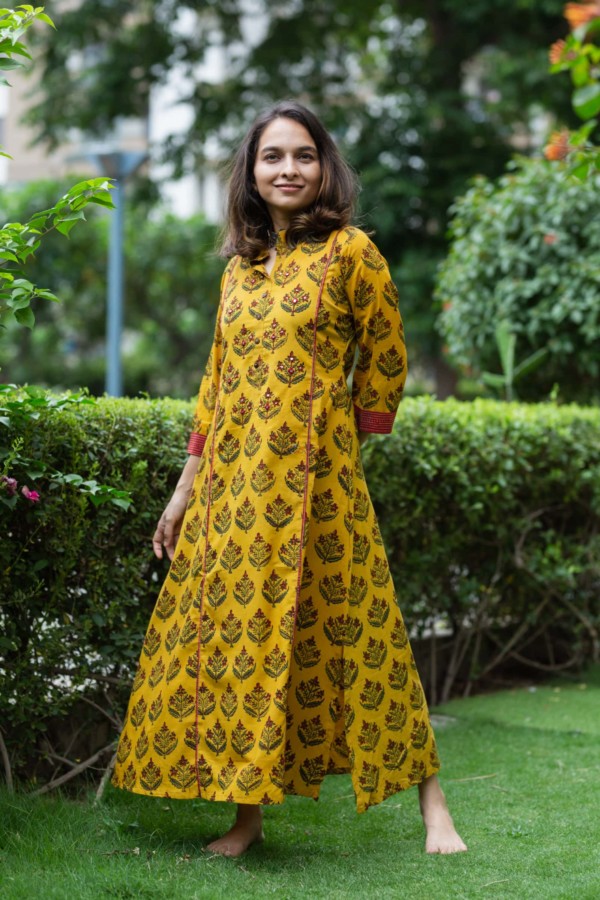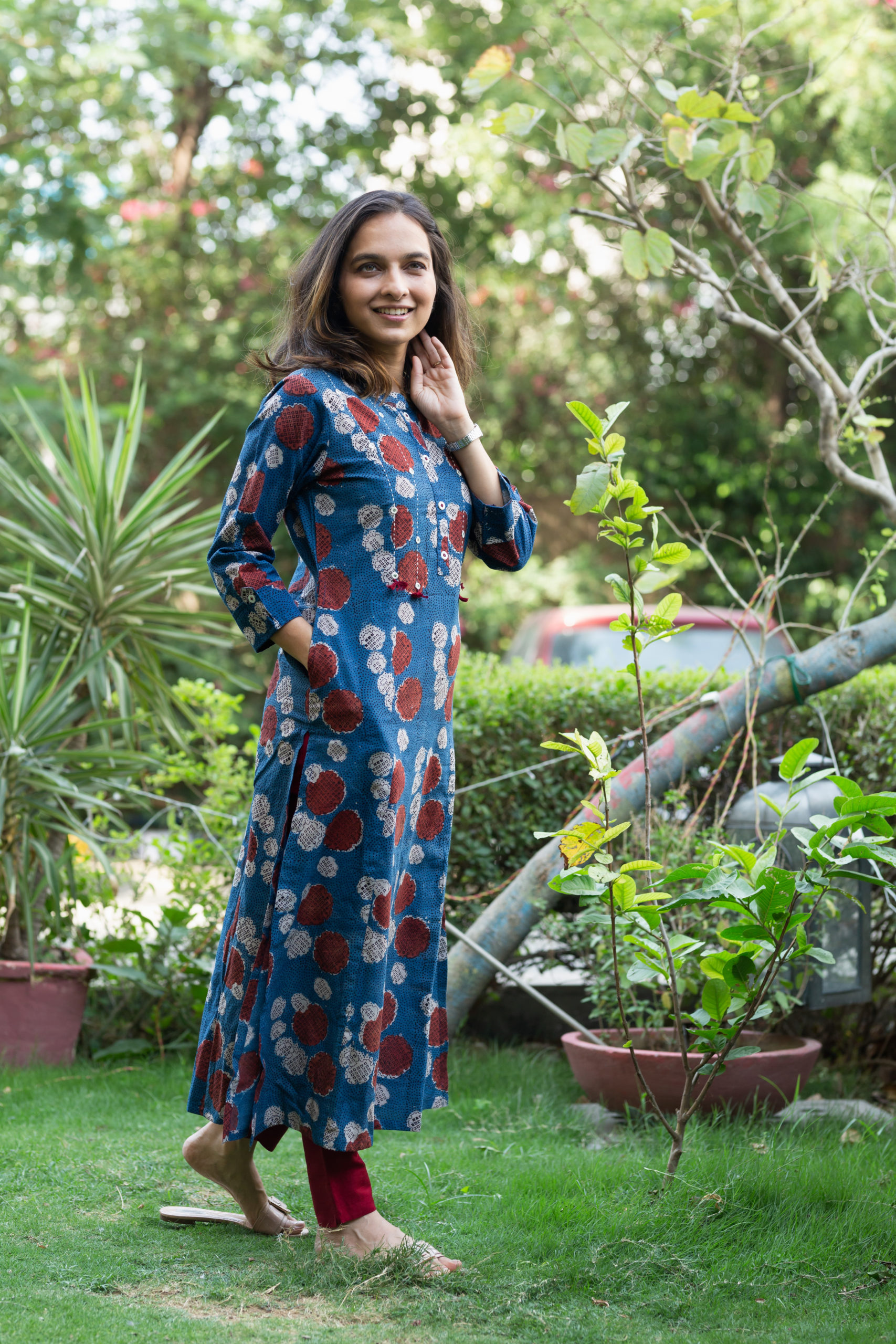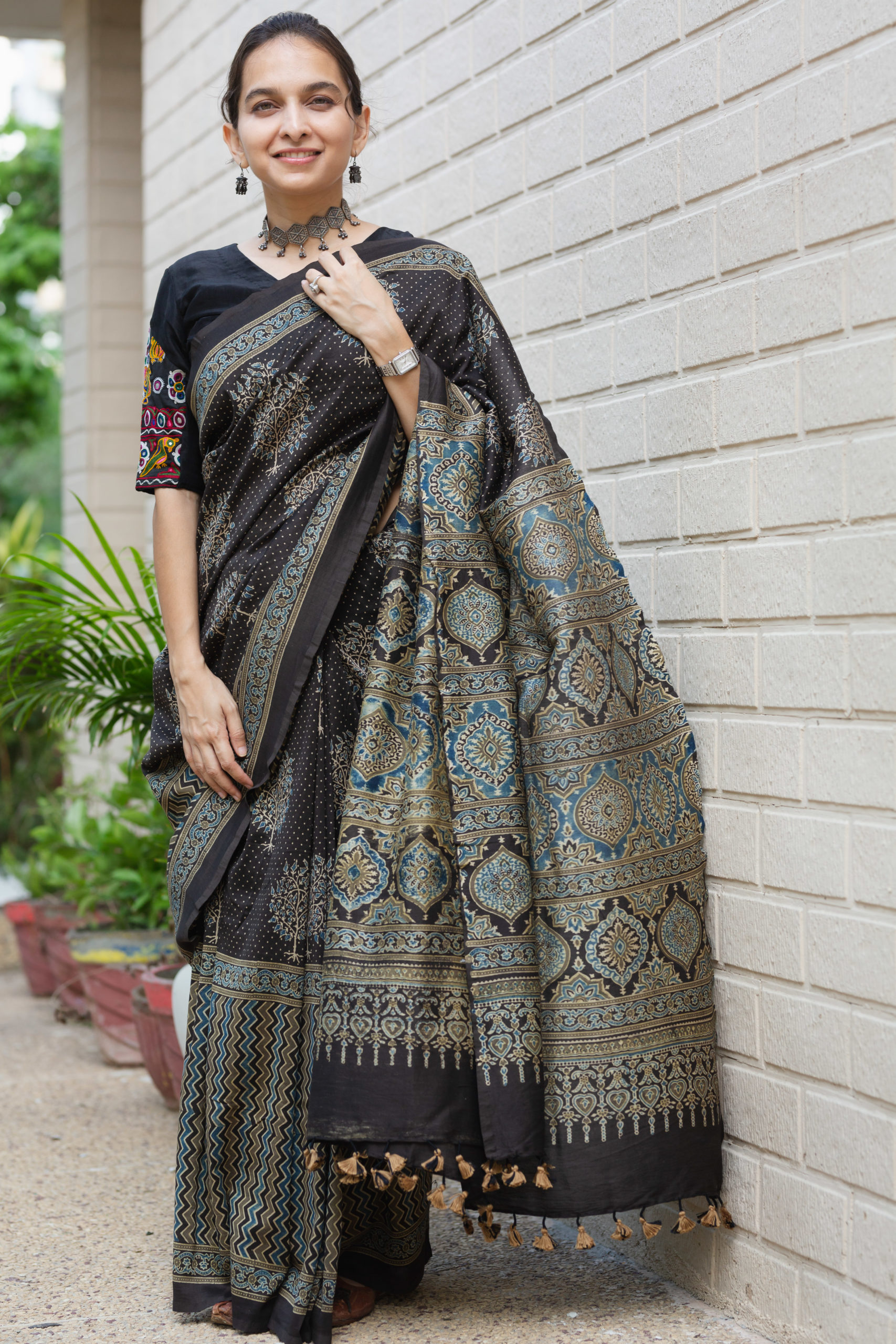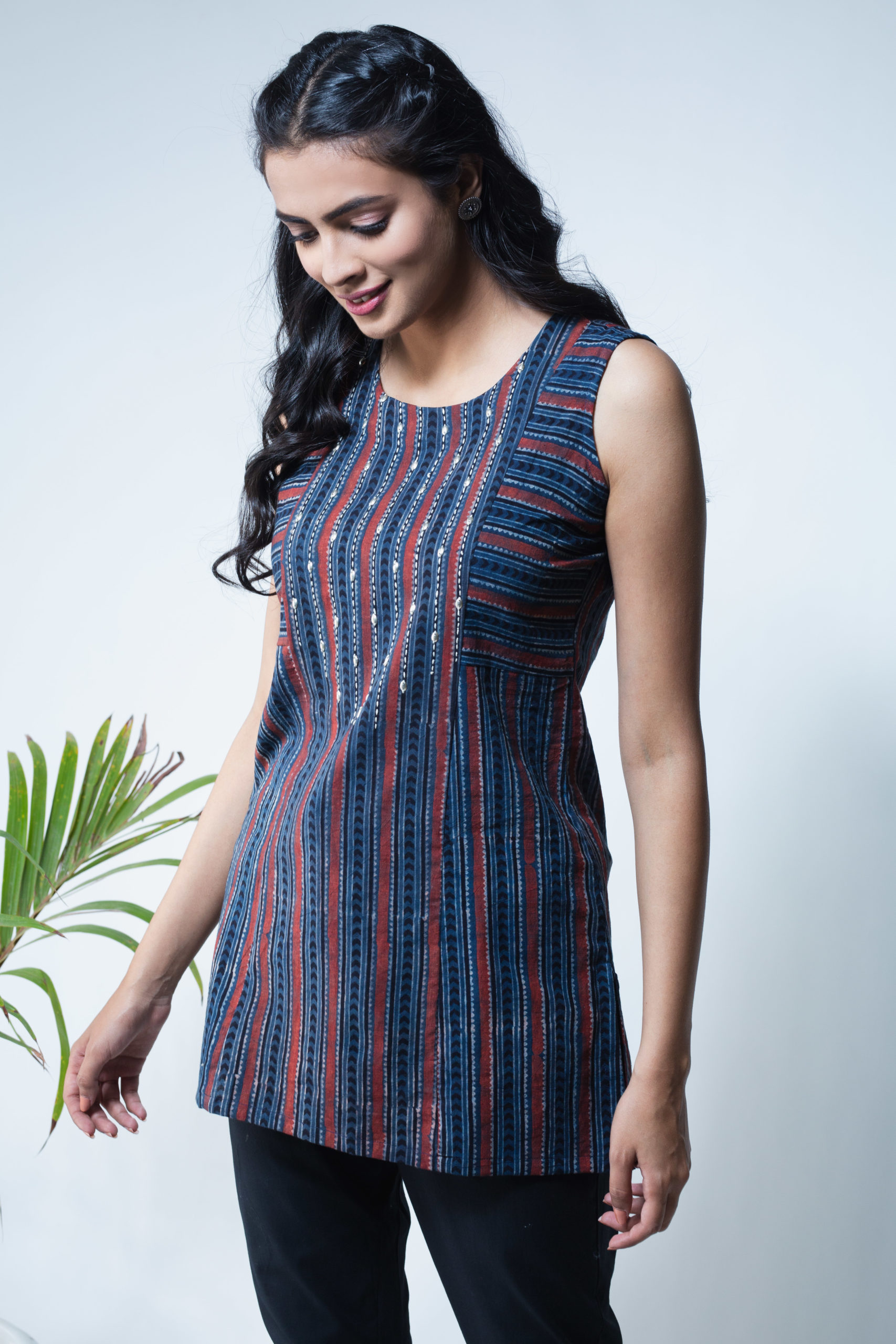A 30 minutes’ drive through the meandering street of the Desert city of Bhuj, land us in Ajrakhpur. The pristine sandy expanses of land are, only occasionally, dotted with lonely acacias. The sound of the scorching breeze is interrupted with unexpected splashes of water. Pools of indigo blue stand out oddly in the featureless land, as artisans dip meters and meters of fine cotton to soak up the vibrant color. The craft of Ajrakh is practiced by the Khatri community. And, the exquisite block printing was traditionally sported by the Maldhari community before it was patronized by Royals for its earthy allure.
This is the story of Ajrakh.
Historic Connection – The Age-Old Ajrakh
The iconic Harappan bust of the Priest-King wearing a shawl along with fragments of block printed cloth unearthed from Cairo has made historians and archeologists conclude that Ajrakh is the oldest indigenous Indian form of printing. The craft is estimated to be 4000 years old.
“Aaj Ke Din Rakh”
The painstaking process of resistant-dyeing involves multiple steps. Once the fabric is dyed, the artisan leaves it for a day for the color to percolate into the fibers completely. Some believe the term “Ajrakh” comes from the phrase “Aaj ke din rakh” meaning “keep it for a day”.
While others believe that “Ajrakh” comes from the Arabic word “Azrak” meaning blue – the color of royalty. The dyeing technique makes extensive use of indigo – a natural blue pigment with a deep connection with India.
The Ajrakh Affair
The process of Ajrakh printing is a rather intricate process that involves fourteen to sixteen steps. Love your Ajrakh kurtas and shirt, here’s what that pretty fabric has had to go through.
Woosh wash!
Ajrakh is done exclusively on natural fabrics. Traditionally, it was done of soft cotton fabric. Eventually, the wave of experimentation swayed artisans to exhibit their art on silk, mulmul, mashru (a blend of cotton and silk), and even satin.
Whichever fabric may be chosen, the artisans need to prepare it for the forthcoming steps. The fabric, usually cotton, is steamed in massive copper cauldrons with soda ash. Then, the fabric it washed multiple times. This not only washes away traces of impurities and starch but also softens the fabric.
Marinade
The washed fabric is soaked in a mix of oils and kept overnight to soak well. Then it is washed again.
Priming
A mixture of natural dyes derived from myrobolan (also called harda locally), oils, and powdered sakun seed is prepared and applied to the fabric. It stains the fabric in a shade of beige and prepares the fabric fibers to hold onto the dyes better.
Building blocks
Ajrakh blocks are usually made of intricately carved wood in geometric shapes. The blocks are dipped in the gum to outline the desired motif. Natural dyes derived from indigo, madder root and likes are mixed in with ferrous sulfate. The resulting dye is then used to dye the fabric. The dyeing is done in multiple layers. And, washed after each session until the artisan reaches the desired shade.
At Kessa, we source our Ajrakh fabric from the most seasoned artisans of Ajrakhpur. When you wear an Ajrakh piece from Kessa, think of it as a piece of art that took hundreds of man-hours and headwork to create. Let’s honor our roots by supporting the artisans in preserving this age-old craft.




